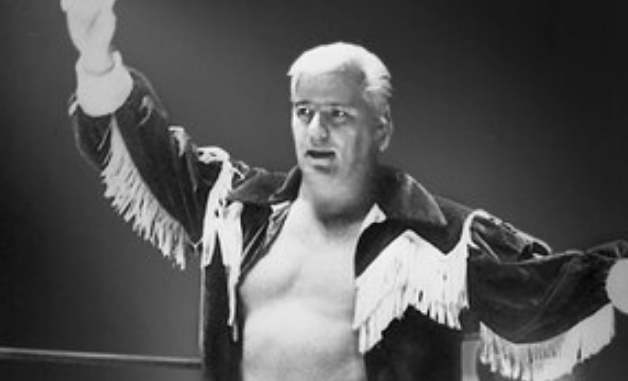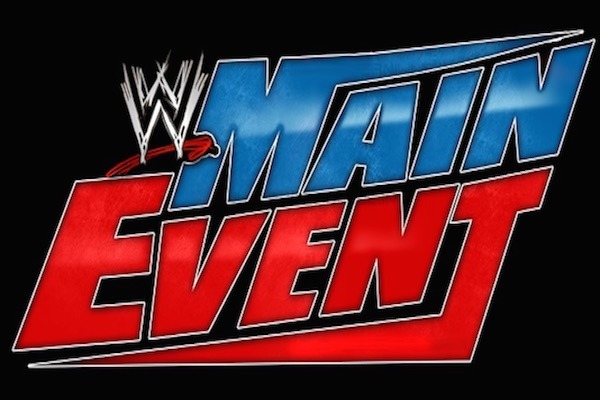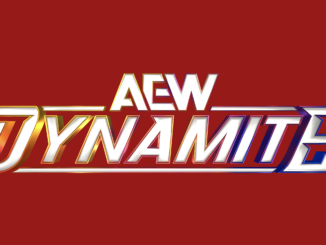
SPOTLIGHTED PODCAST ALERT (YOUR ARTICLE BEGINS A FEW INCHES DOWN)...
WWE Chronicle “Bianca Belair”
One of the great frustrations with WWE for me personally this year is the wasting of Bianca Belair on the main roster. She has every quality you need to be a star in my opinion and this documentary just further proves that to be fact. She’s athletic and has an absolute star-like presence about her that makes it seem like a slam dunk. Instead, they are stop and go with her push and character.
The documentary talks to members of her family about her youth growing up in Knoxville. Bianca said one of the most important things to her was getting out of Knoxville and that it drove her to succeed. She excelled in track and her idol growing up was Florence Griffith Joyner better known as Flo-Jo.
Bianca talks in-depth about her struggles with bulimia dating back to when she was in high school. She talks about how when she was in college and on her track team her coach encouraged her eating disorder as she had been binging at the time. Bianca’s struggles with her eating disorder and mental health are incredible and relatable for anyone that has struggled with these things. Bianca said at one point she decided she had to stop running and face her issues – something she hadn’t done to that point.
Bianca talks about her dad, who was in a band when she was younger. Bianca credits her dad with wanting to be a performer. Randomly, right after this, they show Bianca losing to Bayley which undercut her being a star of the future in my book. It was a horrible thing to do in the middle of a documentary about this up and comer.
Bianca said seeing some videos of people doing CrossFit was a great motivator for her and she dove into that world. Through a post she made on Instagram, Mark Henry contacted her and that ended up being how she got a tryout. I didn’t know that and I found that incredibly interesting.
Bianca talks about her being a part of the Mae Young Classic and how important that was for her career and confidence. She describes that by the end of her time in the tournament she felt like she found Bianca.
The documentary then focuses on her marriage with Montez Ford. Bianca said she had a crush on him from the minute she saw him at the WWE Performance Center. She also said that she told Vanessa Borne that everyone should best keep them far away from one another but it was undeniable. Any of the candid shots of these two interacting shows they are a pretty adorable couple.
Bianca makes a lot of her own gear which I had no clue about and thought was very neat. Bianca says that one of coolest things to happen to her is that there is an action figure of her featuring gear that she made. Bianca talks a lot about how important the showing she had in the 2020 Royal Rumble was to her career.
Representation is very important and on Bianca’s mind in her performance. It is apparent how serious she takes that and how she can be a positive role model to children of color. Bianca talks about how important it was for her parents to fight for her and support her through her tough times. Bianca expresses great joy that she can celebrate these moments with her parents.
Overall, this is an great look at Bianca. Again, WWE storytelling is shortchanging this incredible personality and performer. They’ve gone so broad with her character and I hope in time we see a Bianca closer to the one we see in this documentary. The sky is the limit for her and her character.
My Way: The Life and Legacy of Pat Patterson
Few men have had the impact on modern wrestling like Pat Patterson. Not just in-ring, but as a creative force in the industry. His legacy and impact will be felt for generations
This documentary is filled with a bunch of great interviews with Pat including him giving a tour of Montreal and the apartment where he grew up. Pat talks about growing up being very poor. He told a story about his family going to the YMCA to take baths. Pat talks about how performing as an altar boy and being in front of the crowd at mass made him want to be a performer. That struck me as interesting as I myself was an altar boy years ago.
Pat talks about how he first heard of and started to follow wrestling. He then started selling hot dogs at the matches but got in trouble because he would usually sit down and watch. Pat became friends with the son of the promoter and then started to train to be a wrestler.
The documentary talks frankly about his homosexuality. Pat talks about coming out to his family which did not go well and that is what led him to go to America.
Pat talks about going to Boston not knowing any English, but that he was able to make considerably more money in Boston. Pat shows the apartment he lived in while he was in Boston.
Pat talks about meeting his partner Louie. Pat’s clear affection for the memories in his Boston was apparent. Pat talks about how heartbroken he was to go to the Portland territory and away from Louie. But in the end, Louie followed Pat to Portland before heading to San Francisco which is where Pat became a big star.
Pat talks about the homophobia he experienced by promoter Roy Shire on their first meeting. While Shire was shocked Pat would admit to being gay, he still employed Pat for 15 years. Pat’s legendary team with Ray Stevens is focused on next. I wish there was more of their stuff available as what little I’ve seen has always been good.
Hulk Hogan is the first talking head interview that isn’t Pat. And while Hogan may very well have been a big fan of Stevens and Patterson, I just had no interest in listening to the Hulkster talk. Roman Reigns on the other hand starts telling a family story about Pat and High Chief Peter Maivia that enhances the documentary.
There is a lot of talk about how Pat continued to reinvent himself over the years and that was how he was able to stay as such a feature act in San Francisco for so long. Pat brought his parents to a big show in San Francisco and that is when he finally got validation from his parents and after that, they had a much better relationship.
Gerald Brisco talks about how even at the time Pat wasn’t openly gay in the industry but it was also no secret and there was plenty of rumors. Pat talks about how much staying in the closet in the industry weighed on him. He was cognizant at the time that if he would have been spotted at a gay bar his career would have been over. Pat talking about how he felt he couldn’t be free to be himself was a particularly heartbreaking statement.
Pat’s move to New York is talked about next. Bob Backlund is briefly interviewed about their feud and how Pat was the only person who fought on four straight Madison Square Garden main events against Backlund. Vince is also interviewed during this section and his affection for Pat was very clear. Some of his WWF highlights are talked about including being the inaugural Intercontinental Champion and the infamous alley fight with Sergeant Slaughter.
They talk about Pat’s commentary and how it wasn’t particularly good. Pat talks about how he transitioned to becoming a force backstage and it was because he just offered to come in on his day off. He said that is what started it and everyone talks about how instrumental Pat was in booking WWF. Vince says the most complimentary things about Pat’s creativity which is something I never see Vince say about anyone else. Vince also gives Pat a level of credit I doubt he’d give anyone else.
The development of the Royal Rumble is up next. Pat talks about how the origins of it all come from the annual battle royal that was always done in San Francisco and how Pat wanted to stagger people. The joy you see in Pat as he watches a later Rumble is just so charming. The man loved wrestling so much.
Pat’s influence on Shawn Michaels and Bret is focused on next. The Iron Man match was his brainchild and they both heaped praise on him for laying it all out. This leads to Pat talking about how much he loves helping to develop talent. Some awesome footage of those legendary Dory Funk WWF camps is shown. Wrestlers training include Edge, Mark Henry, the current head of the P.C. Matt Bloom, Val Venis, Steve Blackman, Taka Michinoku, Droz, and a few others. If you ever wanted to know if Ahmed Johnson wore the thigh pads over sweatpants, the answer is “yes” as seen in this footage.
Pat’s Hall of Fame ceremony is up next. Pat mentions Louie in this speech, which I’m assuming is one of the first times Pat publicly acknowledged Louie. Pat never explicitly states that they are partners, but says everything but that. Pat then talks about Louie’s sudden death in 1998 from a heart attack. Gerald Brisco and Bruce Prichard both talk about how lost they felt Pat was after Louie’s death. Pat says they were together for 40 years.
Pat dove into his role as one of Vince’s stooges as a way to distract himself from his loss. Pat said at times he had a ton of fun, but was also conflicted as he wanted to consider himself a serious wrestler. Pat said in 2004 he was very burnt out and decided to retire. Pat also said that he didn’t feel like he fit in much anymore and said that realization hurt. There was an in-ring goodbye from Vince – I’m guessing before or after Taboo Tuesday that year. Vince talked about how despite Pat being retired he told Pat he was welcome to come and contribute whenever he wanted. I do wonder if Pat ever got to see an early version of this documentary, they’ve clearly been working on this for a while.
Pat’s time on Legend’s House is talked about next. I’ve never watched any of Legend’s House as the general idea concept seemed a bit dated at the time as reality shows of that ilk had gone out of fashion several years earlier. From there, Vince says he was happy that Pat finally allowed himself to come out as a weight was off his shoulders despite it not being a very well kept secret. Sonya Deville talks about how Pat coming out made LGBTQI individuals like her feel like she was welcome in WWE.
Pat’s passing is covered next and how much he meant to the current generation. The interview at the end with Vince is among the most human you will ever see Vince. Vince had a deep affection for Pat and you wonder what impact Pat’s death will have on him.
This is a real nice hour-long look at one of the most influential forces on not only modern-day WWE but wrestling in general. Even an event like New Japan’s Wrestle Kingdom does Rambo, which is based on the Royal Rumble. What was very nice to see and very unexpected for me was hearing Pat talk about his sexuality to such a degree, I kind of thought they would only gloss over it. Instead, they chose to focus on it. This is a definite must-watch on the network.
NOW CHECK OUT PREVIOUS WWE NETWORK REVIEWS: WWE NETWORK REVIEWS: NWA Bunkhouse Stampede 1988




Leave a Reply
You must be logged in to post a comment.